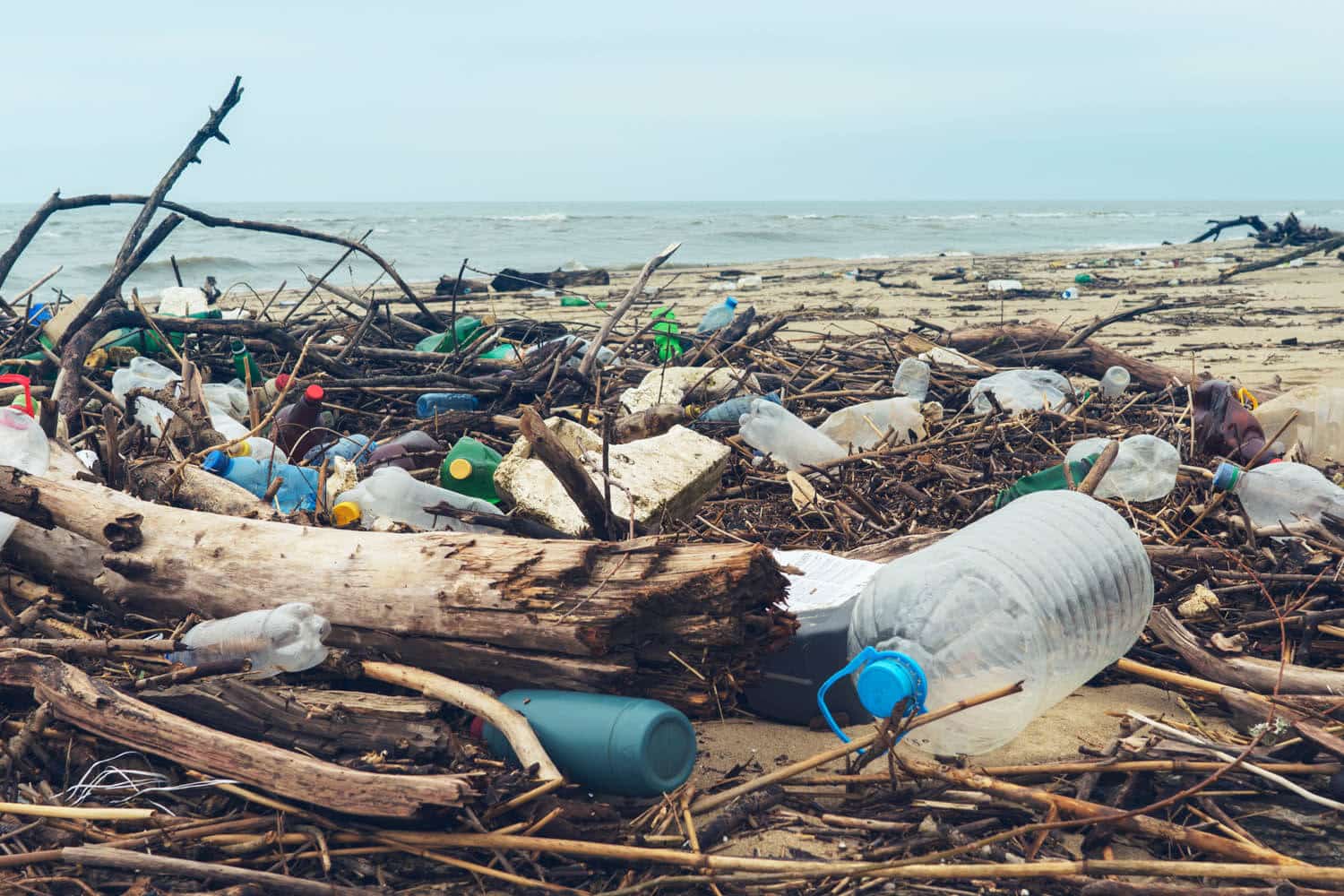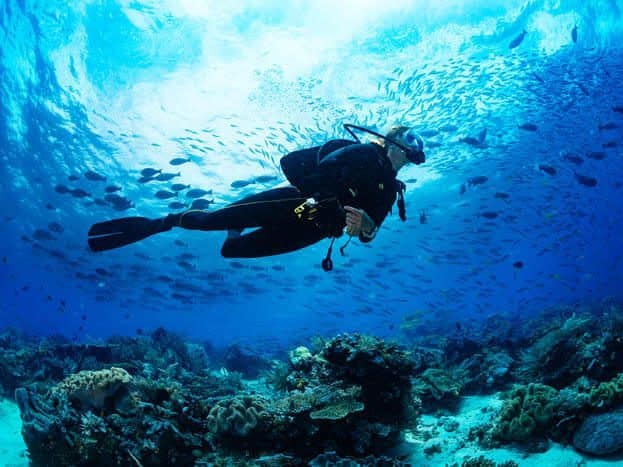Frequently Asked Questions
Have a question about plastic pollution? Check out our Frequently Asked Questions below.
Single-use plastics are items designed to be used only once and then discarded. 40 percent of plastics are created for single-use purposes. Unlike items designed to be refilled and reused, single-use plastics consume a significant amount of energy, water, and natural resources to be used for just a few minutes.
Items such as plastic takeout containers may have a recycling symbol on them, but they are difficult (if not impossible) and costly to recycle and frequently end up dumped, burned, or littered. Still others like plastic utensils, straws, cups, and lids have no good destination and end up costing communities money to send to a landfill or clean up off the streets. If handled poorly, all of these items can end up polluting our oceans, killing wildlife, and harming our ecosystems.
Find out more in Single-Use Plastics Explained.
You can join Plastic Pollution Coalition as an individual, organization, or business. Plastic Pollution Coalition provides a platform for sharing best practices, amplifying messaging, and connecting Coalition members.
Get involved! You can sign a petition, join one of our monthly webinars, or sign up for our Newsletter. You can also donate to support our work.
Coalition membership is the foundation of all of our business partnerships. If you represent a business that wishes to partner with Plastic Pollution Coalition, please start the process by completing the application.
Businesses who are Coalition members can collaborate with Plastic Pollution Coalition through corporate partnerships or by donating through 1% for the Planet. Contact us with ideas for partnerships or questions.
“Ocean garbage patches” are a bit of a misnomer. Plastic Pollution Coalition members 5 Gyres and the Plastic Soup Foundation coined the terms “plastic soup” and “plastic smog,” which more accurately explain what is happening in our seas.
Plastic enters the environment through many different ways: maritime activities (shipping, fishing, illegal dumping at sea, recreational boating), and land-based emissions (rivers, beaches, beach trash washing back in, and storm drains), and even airborne as microfibers, which have been found as far as the Alps and Arctic snow.
According to 5 Gyres Co-Founder and Research Director, Markus Eriksen, “Plastics from maritime activities that are lost far offshore have the best chance of migrating to the 5 subtropical gyres, whereas 90% of coastal emissions are largely traveling in coastal waters and pushed back on shore. Only 10% or less makes it from land to the subtropical gyres.”
Once plastics enter the environment, as macro and microplastics, they begin to fragment due to UV degradation, oxidation, embrittlement, and biological interaction. They become smaller and smaller until they are either washed ashore somewhere, ingested by filter-feeders, or become so small they are taken deep by currents that take them around the world.
These trillions of microplastics, horizontally, and vertically in all waters, form the “smog of the sea.”
99% of plastics used today are made from fossil fuels. As the world economy shifts to energy efficiency and renewable energy sources in sectors such as transportation, the fossil fuel/petrochemical industries are investing in plastic production to replace those markets.
Dozens of new ethylene cracker plants are proposed in the U.S. which rely on heating ethane, a waste product from fracking, to be used as a main ingredient for single-use plastic packaging, all while consumer demand for single-use plastics is declining. Despite this, the World Economic Forum has stated that plastic production and plastic use will grow 3.8% every year through 2030.
Single-use plastic packaging threatens our climate on a global scale. Throughout plastic’s lifecycle, from drilling the fossil fuels that compose 99% of plastic, to refining, manufacture, and disposal, plastic emits greenhouse gases and is a significant driver of climate change.
The plastic and petrochemical industries are poised to quadruple plastic production by 2050, largely to flood our markets with single-use plastic products. This expansion threatens humanity’s ability to keep global temperature rise below 1.5 degrees Celsius.
According to the Center for International Environmental Law (CIEL), by 2050, plastic production and disposal could generate greenhouse emissions equivalent to 615 coal plants every year and consume up to 13% of Earth’s remaining carbon budget. Worse still, microplastics may be interfering with the ocean’s ability to absorb and sequester carbon, our biggest natural carbon sink.
Everyday, we inhale, ingest, and touch plastic particles and plastic’s chemical additives that are toxic to human health—through the food we eat, the water we drink, the air we breathe, and the toys, packaging, and clothes we use.
At each stage of its lifecycle, plastic is toxic. According to CIEL, the extraction of fossil fuels that create plastic emit over 170 carcinogenic and/or neurotoxic chemicals in fracking alone. Plastic products contain large quantities of toxic chemicals, up to 80% by mass. These include carcinogens, endocrine disruptors, and heavy metals.
Disposing of plastic through incineration, land-filling, so-called chemical recycling, or ideas like plastic roads or houses also release scores of toxic substances into our air, water, and soils.
Finally, plastic, in the form of macro or microplastics, contaminates and accumulates in food chains, where it can release toxic additives or concentrate additional toxic chemicals, making them available again for direct or indirect human exposure.
Tiny plastic particles have been found in human blood, lungs, and reproductive systems and they carry toxic chemicals known to contribute to the development of cancers, diabetes, immune diseases, and other serious health issues.
Individually, each stage of the plastic lifecycle poses significant risks to human health. Together, the lifecycle impacts show plastic threatens human health on a global scale.
The effects of single-use plastic, including containers and packaging, on marine animal health range from detrimental to lethal. Marine Biologist and Plastic Pollution Coalition Notable Member, Christine Figgener, explains: Animals are getting entangled in plastic items such as six-pack rings, plastic bags, and fishing-line, which impede their movements at best or lead to a torturous death by strangulation or slow starvation.
Often, plastic is mistaken as food and ingested, which can lead to obstructions of the digestive tract or the perforation of stomach and intestinal walls and eventually death. Even the ingestion of smaller quantities of plastic, which are not immediately lethal, has been shown to reduce the chances of survival. More recently, studies have started to investigate the effects of certain toxins, including neurotoxins such as mercury and endocrine disruptors such as PCBs that preferentially adhere to the surface of plastics in particular, microplastics of 5mm or smaller.
Microplastics are ingested by a variety of animals as small as zooplankton and the toxins accumulate in an individual’s tissue (bioaccumulation). When traveling up the food chain, the concentrations of these toxins increase with each consumer (called biomagnification). More and more evidence amasses that these toxins cause infertility and other health issues such as malnutrition and high newborn mortality in especially the top predators of food chains, such as sharks and orcas. All in all, plastic pollution affects and kills marine life throughout the ocean in various ways.
Contrary to popular belief, there is no proof that plastic material recyclability or access to recycling bins genuinely reduces plastic pollution. More than 400 million metric tons of plastic is produced annually, and more than 90 percent has ended up in landfills and nature, or is incinerated, harming wildlife and people. Only 5 to 6% of all plastic waste generated in the US is currently being recycled, as the per capita generation of plastic waste in the US has increased by 263% since 1980.
Chemical Engineer and Plastic Pollution Coalition Scientific Advisor, Jan Dell says: “There are many types of plastics used in food packaging and service and most of them cannot be practically recycled due to the complexity, diversity, contamination, and geographical dispersion of the waste materials. The cost of trucks and drivers to collect plastic waste, labor to separate it into different types of plastics, fresh water to clean it and finally the investment in the processing equipment and operation of the recycling plant is prohibitively high.”
Technical processes for recycling many types of plastic packaging have not been proven outside of a laboratory on real world waste. Even the recycling of few plastic packages that are practically recyclable, such as polyethylene terephthalate (PET) beverage bottles, is wasteful because a significant portion of the collected PET bottle material must be discarded. In 2019, the plastic bottle industry reported that 27.9% of PET bottles were collected in the U.S., but over a quarter (28%) of that collected material was disposed of.
The ultimate solution to the plastic pollution crisis is to stop producing so much single-use plastic and scale up refillable and reusable alternatives to single-use plastic.
Did you know that nearly 95% of single-use plastic never gets recycled in the US? Where does it go? Unfortunately, most plastic globally ends up in landfills and the environment, while another significant share is burned in incinerators. In fact, six times more plastic waste is burned in the United States than is recycled.
According to the Global Alliance for Incinerator Alternatives (GAIA), “waste-to-energy” (sometimes called waste-to-fuel or pyrolysis) is actually a waste OF energy, resources, and money.
Incineration of plastic has been proven time and time again as ineffective and hazardous to human health. Burning trash is one of the most expensive forms of energy generation, 4x the cost of solar power and wind.
The companies that run these incinerators get millions in tax dollars, and in turn the taxes that residents pay go toward poisoning the places where they live, work, and raise their families. Incinerators are known to emit such pollutants as carbon monoxide, mercury, and lead. Many of these pollutants– even in trace amounts– can significantly impact human health, and disproportionately impact communities living close to incinerators, roughly 80% of which are lower income communities and/or communities of color. And if that weren’t bad enough, burning plastic in incinerators will only make climate change worse. Plastic is made from fossil fuels, so every ton of plastic burned releases almost one ton of greenhouse gas emissions. Globally, burning plastic packaging adds 16 million metric tons of GHGs into the air, equivalent to more than 2.7 million homes’ electricity use for one year!
We can’t burn our plastic problem away, poisoning communities and our climate in the process. Instead, cities and states can adopt policies aimed at reducing plastic like bans and fees, and hold companies to account for their wasteful products. These policies give businesses the opportunity to rethink and redesign their products and packaging so that plastic pollution will become a thing of the past. It’s time for the world to #breakfreefromplastic!
Zero Waste is a philosophy that aims to avoid waste and preserve resources through responsible production and consumption practices. Keeping within the environmental boundaries of our planet will require systemic change, with no hazard to people’s health or our ecosystems, and will mean embracing the principles of a more circular economy.
According to Larissa Copello, President and CEO of Zero Waste Europe, “Following the Zero Waste path entails a behavioral change that will move us away from our current throw-away society, curb plastic pollution, and ensure a more sustainable management of resources, especially regarding the use of single-use and short-lived plastics. These have the highest disposal rates and the lowest recyclability, while posing a major challenge to our health, ecosystems, and economy.”
By reducing our use of single-use products, and by making products responsible by design (long-lasting, reusable, recyclable, toxic-free, and incorporating recycled content), and by investing in waste prevention systems such as reuse, we can join others who have already started down the Zero Waste path.
Plastics are everywhere, all around us. According to Captain Charles Moore, Marine Conservation Researcher and founder of Algalita Marine Research Foundation, “There is no real mystery as to why plastics have become the predominant material of the current epoch. It can substitute for nearly every traditional material, from textiles to metal at reduced cost and weight, and offers qualities unknown in naturally occurring substances, thereby feeding a worldwide industry. The difficulty of recycling plastics has made profitable recovery for nearly all plastics a major problem, which in turn results in failure to provide take back infrastructure and results in haphazard discard and loss to the environment.”
Although the majority of plastics produced today use petroleum resources which are finite, the carbon backbone of synthetic polymers can be fashioned from switchgrass, soybeans, corn, sugarcane, or other renewable resources—the price alone determines industry’s preference.
Compostable materials such as paper and algae-based materials are more sustainable than single-use plastics. The best alternatives to single-use plastics are those that are nontoxic and reusable, such as stainless steel, glass, ceramic, wood, and bamboo.
There is much confusion around bioplastics and compostable plastics. The good news about compostable plastic is it is typically made from plants rather than petroleum. The bad news is you need a large industrial composting facility to create the ideal conditions in which to break down these types of plastics. In fact, some recycling facilities consider PLA (made from corn) a contaminant.
To make matters even more confusing, biodegradability standards are not applicable in the marine environment. Marine degradable plastics, such as polyhydroxyalkanoates (PHAs), have been found to fully degrade in both seawater and marine sediments in the laboratory setting, but have a negligible market share, and are not poised to make rapid headway into the consumer plastics market at the present time.
Lastly, many products made from bioplastics are just as toxic as conventional plastic. Ultimately, shifting to “better” plastic is less of a solution than shifting away from all plastic altogether. Shifting to sustainable and reusable materials is the best solution for the health of humans, animals, waterways, oceans, and our environment.
Still have questions? Check out our Plastic Pollution Facts, search for a topic, visit the Resource Library or send us an email.



